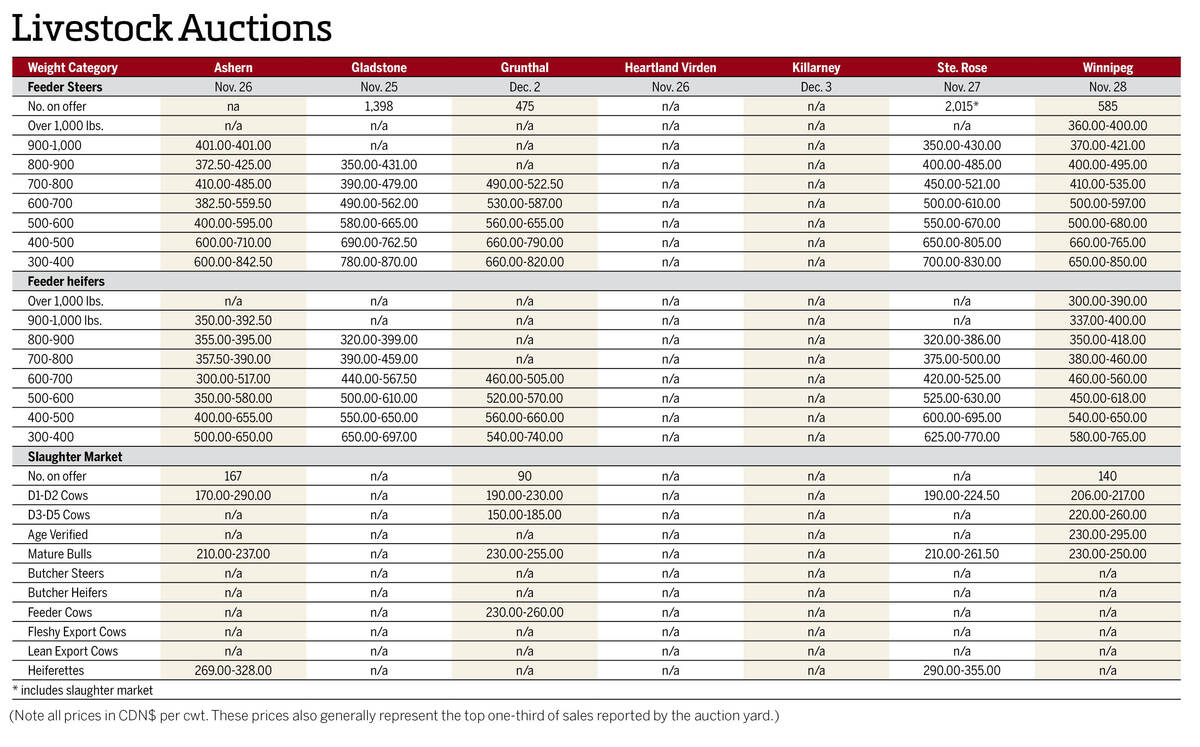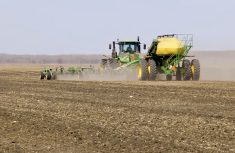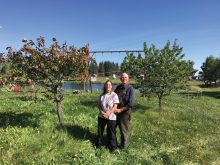Organic production is one way for small farmers to improve their viability, an analyst told a seminar at Manitoba Ag Days in Brandon.
Roy Arnott, who does annual cost-of-production budgets for MAFRD, said the gross revenue over operating costs in conventional agriculture leaves a margin of 20 to 40 per cent. That margin is what farmers have left over to pay their land, equipment and living costs.
In organic production that margin is typically 50 to 60 per cent.
“That increased profitability level equals increased viability for smaller farms,” he said. “They are able to pull out a higher level of profit.”
Read Also

Manitoba cattle prices, Dec. 3
Cattle prices from Manitoba’s major livestock auction marts during the week Nov. 25-Dec. 2, 2025.
Based on estimated costs and returns for various crops in 2016, Arnott said organic producers could see net profit levels range from $100 to $300 per acre. For conventionally produced crops, those net profits range between $10 to $50 per acre.
What’s important is that farmers crunch their own numbers and know their operating and fixed costs.
“I firmly believe that cost-of-production planning is a key point of any farm operation. I think it’s something you have to do, whether you’re conventional or organic,” he said.
“Cost per acre is great, but you don’t sell acres. You have to know cost per bushel.”
Arnott presented the organic COP for 2016, encouraging farmers to use provincial budgets as a reference to calculate their own farm’s cost of production per bushel.
He also flagged a new spreadsheet, the MYFARM crop management calculator, now available through MAFRD.
“It’s based on the COP so it’s simple and easy to use and easy to preload,” he said, adding it will help to figure out that all-important cost-per-bushel basis plus a per-acre and total-cost basis.
“It looks at a bunch of different things, the break-evens, margins. It can help you track your grain sales and help you calculate your break-even on your remaining unsold bushels,” he said. “Even for someone good with numbers in their head, that’s a tough one to do on the fly,” he added.
The new spreadsheet also includes a ‘what if’ analyzer for knowing the implications of decreased yields or prices as the season advances, or how equipment purchases, or land purchases or rents will affect the bottom line.
Various farm software and worksheets are available on the MAFRD website.
















